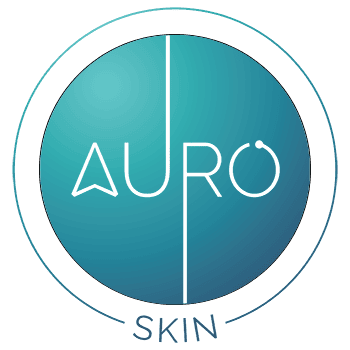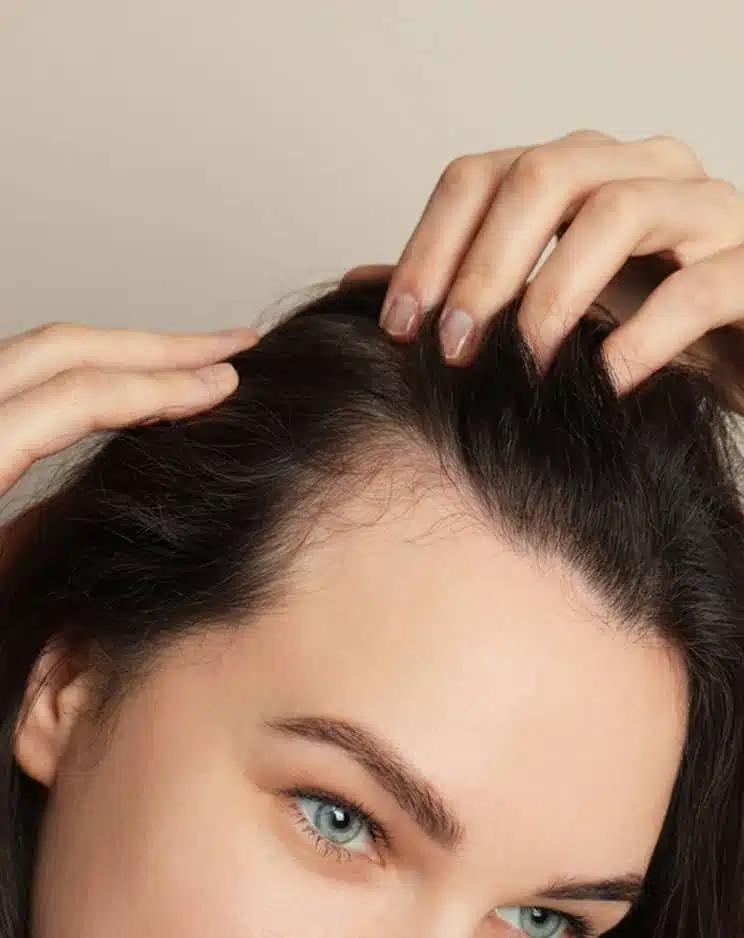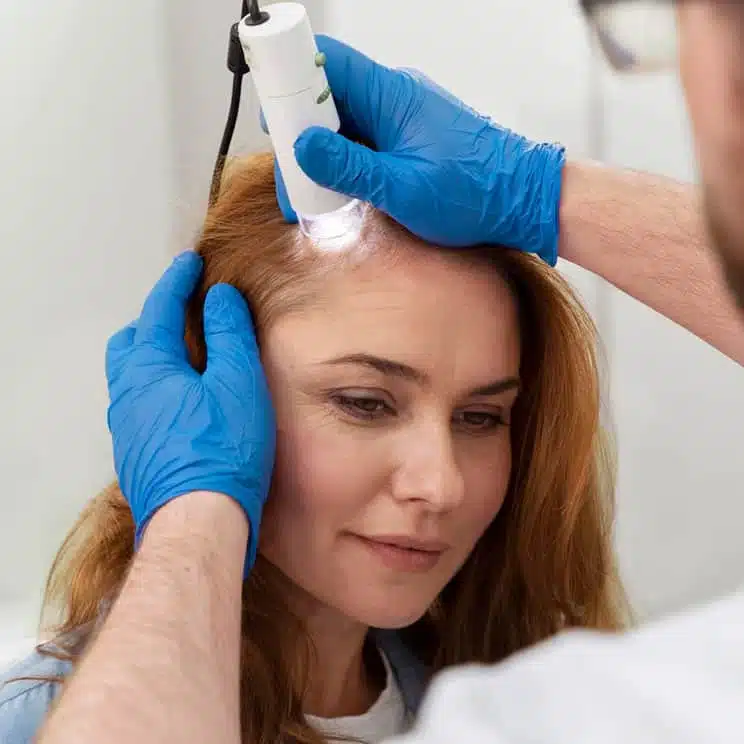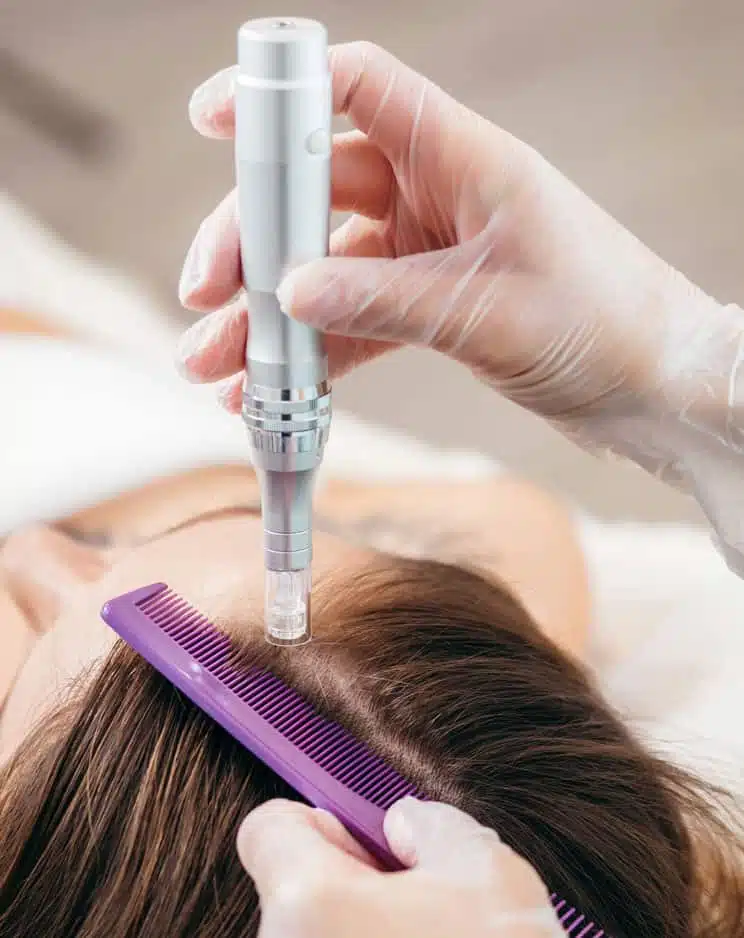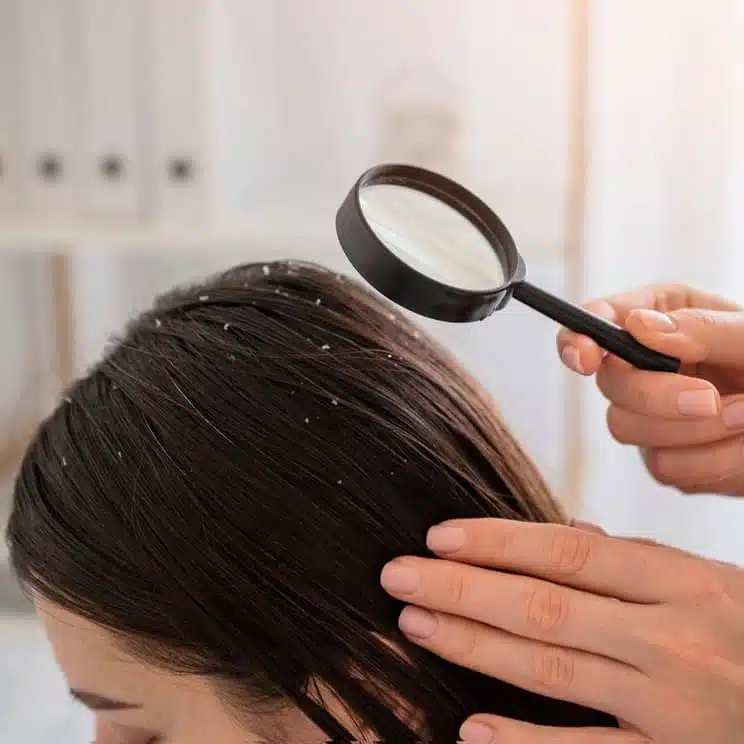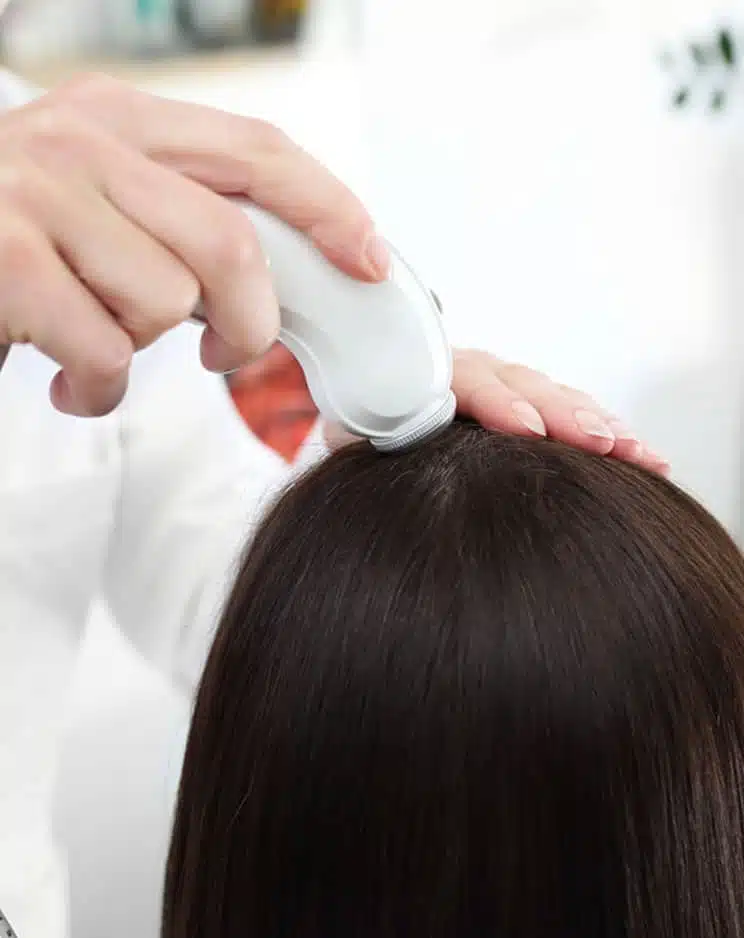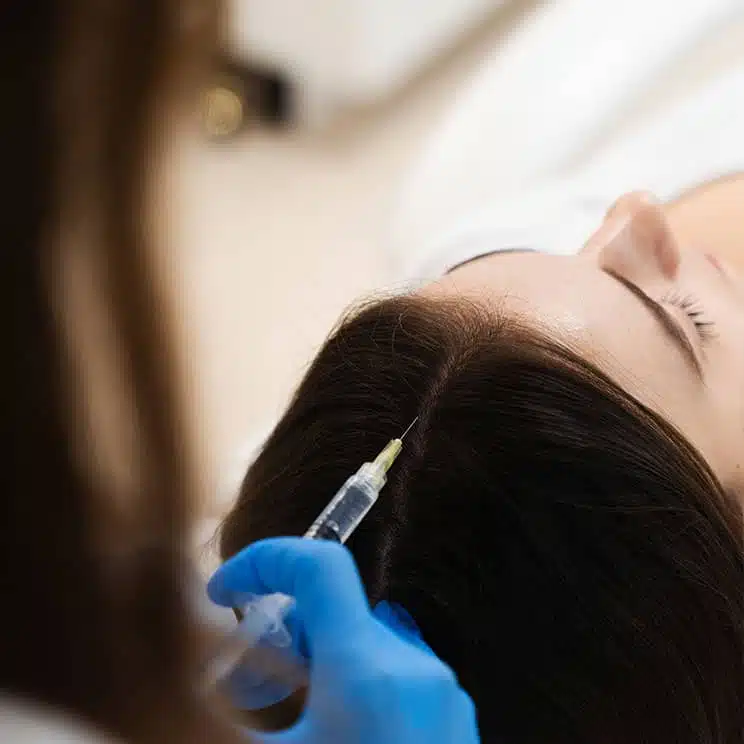- +91 91360 95925
- hello@auroskin.in
- 2nd Floor, Sapphire Plaza, Opp CNM School, Dadabhai Road, Vile Parle West, Mumbai
- About Us
- Services
- Skin
- Hair
- Nail
- Diagnostics
- Dermatosurgery
- Laser Treatments
- Aesthetics
- RF Skin Tightening Treatment
- Profilo Treatment
- Micropigmentation Treatment
- Dark Circle Removal Treatment
- Laser Vaginal Tightening Treatment
- Open Pores Treatment
- Botox Treatment
- Fillers Treatment
- Thread Lift Treatment
- Skin Patch | Allergy Testing Service
- Fillers Treatment
- Exosome Treatment
- Double Chin Reduction Treatment
- Patient Reviews
- Gallery
- Blogs
- Appointments
Losing hair suddenly can be frustrating and emotionally challenging. If you’ve noticed bald patches or thinning hair, you might be dealing with Alopecia areata. But you don’t have to let it define you. You can regain a fuller, healthier scalp with expert treatment and the latest medical technology. At Auro Skin Clinic, we provide customised alopecia areata treatment in Mumbai to help you regain confidence with proven treatments.
What is Alopecia Areata?
Alopecia areata is a condition where the body’s immune system mistakes healthy hair follicles as foreign and attacks them, resulting in sudden hair loss. It can affect anyone at any age and appears as small, round bald patches on the scalp. In some cases, it can progress to more severe forms, like Alopecia totalis, where the entire scalp hair is lost, or Alopecia universalis, where hair loss occurs all over the body. While it is not life-threatening, it can impact a person’s confidence and emotional well-being. Early diagnosis and professional treatment can help manage symptoms and promote hair growth.
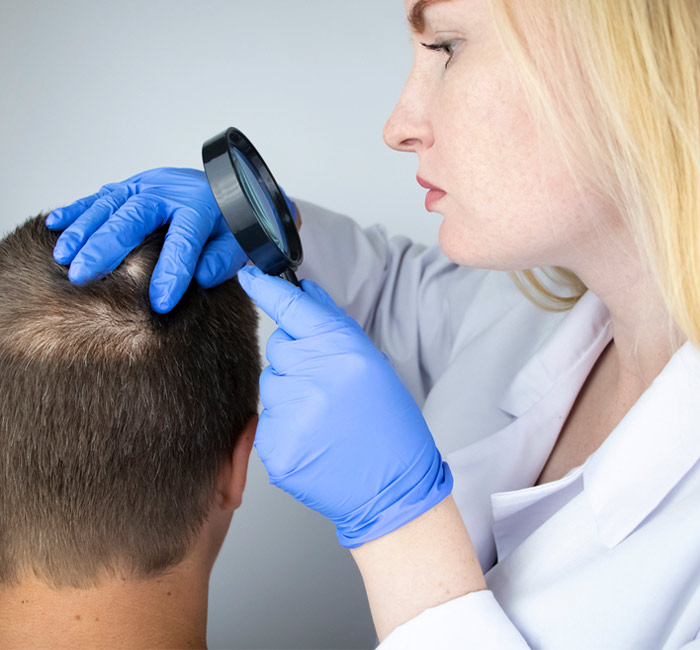
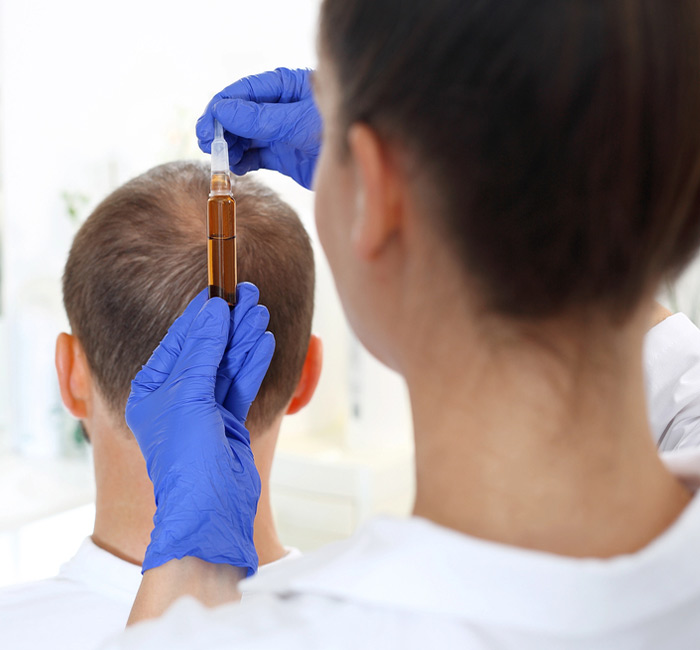
Alopecia Areata Treatment Procedure
At Auro Skin Clinic, we follow a step-by-step approach to alopecia areata and other hair treatments in Mumbai for optimal care and long-term results.
1. Consultation
During the consultation, our experts will do a thorough scalp examination using a dermascope to diagnose the disease and assess the extent of hair loss. A detailed medical history will be taken to identify possible triggers like stress, genetic factors, or underlying health conditions. The patient's customised treatment plan will be created based on the diagnosis.2. Pre-Procedure Care
In some cases, blood tests may be done to rule out any deficiencies or hormonal imbalances that could be causing hair loss. Also, any ongoing medications or supplements will be reviewed to ensure they don’t interfere with the treatment.3. Treatment Procedure
For alopecia areata, a variety of treatments may be combined to promote hair regrowth and treat the underlying conditions. Our experts might suggest:- Topical Treatments: We might directly apply creams or other topical medications on the scalp to decrease inflammation and stimulate hair growth.
- Oral Treatments: In certain situations, oral drugs such as corticosteroids or other immunosuppressants can be given to control the immune reaction responsible for hair loss.
- Eximal Laser: This non-surgical treatment uses low-level laser light to stimulate hair follicles, enhancing blood circulation and encouraging new hair growth.
- Intra lesional Injections: Certain scalp areas are injected with medical solutions to decrease inflammation and encourage hair regrowth in regions with patchy hair loss.
4. Aftercare
After the treatment, patients are given a comprehensive aftercare plan to maintain scalp health and promote hair growth. Follow-ups are scheduled to track progress and adjust the treatment plan if needed.Benefits of Getting Treatment for Alopecia Areata
- Helps Stop Or Slow Down Further Hair Loss: Early treatment can prevent alopecia areata from worsening and helps reduce hair loss and preserve existing hair.
- Stimulates Natural Hair Growth: Effective treatment promotes hair follicle regeneration, helps patients regain lost hair, and restores a fuller scalp.
- Strengthens Hair Follicles: The treatment helps improve the health of hair follicles and make them more resistant to breakage.
- Boosts Confidence: Addressing hair loss concerns can improve emotional well-being and enhance personal and professional confidence.
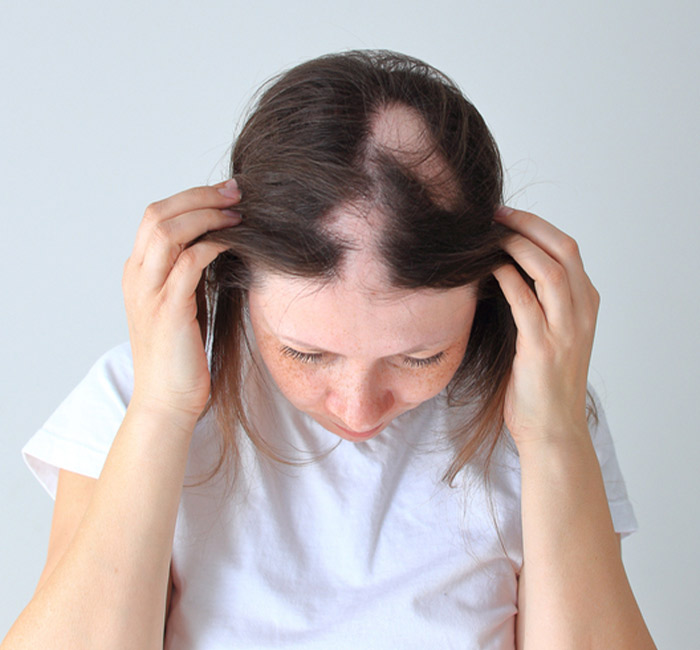
Why Choose Auro Skin Clinic For Alopecia Areata Treatment In Mumbai?
We're a trusted name in alopecia areata treatment in Vile Parle. Our team of skin specialists in Mumbai has the expertise to diagnose and treat hair-related conditions. We use the latest technologies and medical advancements for safe and effective hair treatment. What sets us apart is our patient-centric approach. We tailor care to each individual's condition, ensuring the best possible outcomes.
If you're looking for reliable alopecia areata hair fall treatment in Vile Parle, you're one step closer to restoring your hair health by scheduling an appointment with us!
FAQs for Alopecia Areata Treatment in Mumbai
What is alopecia areata?
Alopecia areata is an autoimmune hair-loss condition where round patches of hair fall out suddenly, often on the scalp or beard area.
Who is a good candidate for alopecia areata treatment?
Anyone with one or more patchy bald spots or recent hair loss onset should consult a dermatologist at Auro Skin Clinic for assessment.
How is alopecia areata treated at the clinic?
The dermatologists use customised therapies such as injections, topical medications, PRP (Platelet-Rich Plasma) and scalp-focused treatments to encourage regrowth.
Can hair regrow after alopecia areata?
Yes, with timely treatment, hair often regrows, though monitoring and follow-up are essential to manage recurrences.
Is there a downtime for alopecia areata treatments?
Most treatments are minimally invasive, short in duration and allow you to resume your daily routine with little interruption.
What causes alopecia areata?
It’s triggered by the immune system mistakenly attacking hair follicles, sometimes in people with a family history, stress, or other autoimmune conditions.
How long does it take to see results from treatment?
Some improvement may appear in a few weeks; full visible regrowth, depending on the extent, may take several months.
Will alopecia areata come back after treatment?
It can recur, or new patches may appear, so maintenance and follow-up care at Auro Skin Clinic help manage the condition long-term.
How much does alopecia areata treatment cost in Mumbai?
Costs vary based on severity, sessions required and therapies used. Auro Skin Clinic offers a consultation to provide a tailored quote.
Why choose Auro Skin Clinic for alopecia areata treatment in Mumbai?
The clinic combines expert dermatologists, advanced scalp diagnostics and personalised hair-care plans tailored for alopecia areata and hair-loss conditions.
Get Support
